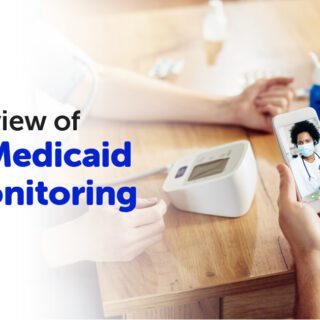
Hospitalizations not only impact our health but also place significant strain on families and already overburdened medical systems. Implementing preventive strategies is key to maintaining well-being and avoiding unnecessary hospital stays. In this article, we will discuss five highly effective approaches individuals can adopt to reduce their risk of hospitalization. Let’s explore how small adjustments today can lead to a healthier future.
Adopting digital healthcare techniques like RPM and CCM can help reduce hospitalization rates across the U.S. Remote Patient Monitoring (RPM) and Chronic Care Management (CCM) can significantly reduce hospitalizations by providing continuous care and early intervention for patients with chronic conditions.
RPM allows healthcare providers to track vital signs and symptoms in real-time, enabling prompt action before conditions worsen. This reduces the likelihood of emergency room visits and hospital admissions.
CCM focuses on ongoing care coordination for chronic disease patients, helping them manage medications, follow care plans, and receive regular check-ins. This proactive care minimizes complications, ensuring health issues are addressed early. Together, RPM and CCM create a comprehensive care approach, preventing hospital stays.
Improving medication management practices is essential for reducing hospitalization rates in the U.S. Firstly, ensuring that patients understand their prescriptions can significantly cut down on medication errors and adverse drug reactions—two common reasons individuals end up back in the hospital. Additionally, regular communication between healthcare providers and patients fosters a collaborative approach to managing medications.
By keeping tabs on refill schedules and potential side effects, we can catch issues before they escalate. These proactive strategies are some of the most effective ways to reduce hospitalization overall, showcasing how critical it is to prioritize correct medication use.

By empowering patients with knowledge about their conditions, treatment options, and self-care practices, we can significantly improve outcomes.
When individuals become actively involved in their healthcare decisions, they’re more likely to stick to prescribed treatments and monitor potential issues before they escalate into serious problems. This proactive approach not only keeps people out of hospitals but also fosters a sense of ownership over their health journey.
In today’s healthcare landscape, virtual consultations offer a refreshing alternative to traditional in-person visits, gently guiding patients toward more convenient options. By embracing telehealth services, individuals can access medical expertise from the comfort of their homes, which not only reduces travel burdens but also minimizes exposure to potential health risks found in waiting rooms. This innovative approach fosters timely interventions and encourages adherence to treatment plans as people find it easier to seek help when it’s just a click away.
Moreover, with real-time monitoring tools and app-based communications, practitioners can keep a closer eye on their patients’ conditions while enhancing accountability.

By fostering connections between local organizations, families, and health providers, we can create an environment where individuals feel supported and engaged in their own care.
For instance, establishing community resource centers can help bridge gaps by offering nutrition counseling, mental health support, and wellness programs. Additionally, encouraging volunteers from within neighborhoods builds relationships and helps identify at-risk individuals who might require more customized assistance. Ultimately, when people know they have a solid network backing them up, they’re less likely to rely on emergency services or hospitalizations for issues that could be managed with proactive community intervention.
In our efforts to avoid hospitalization, we often overlook the simple yet profound truth: it’s not just hospitals that care about us. By embracing preventive health measures and seeking support in our communities, we’re ironically building a safety net that catches us before we tumble into those sterile hospital rooms we dread.